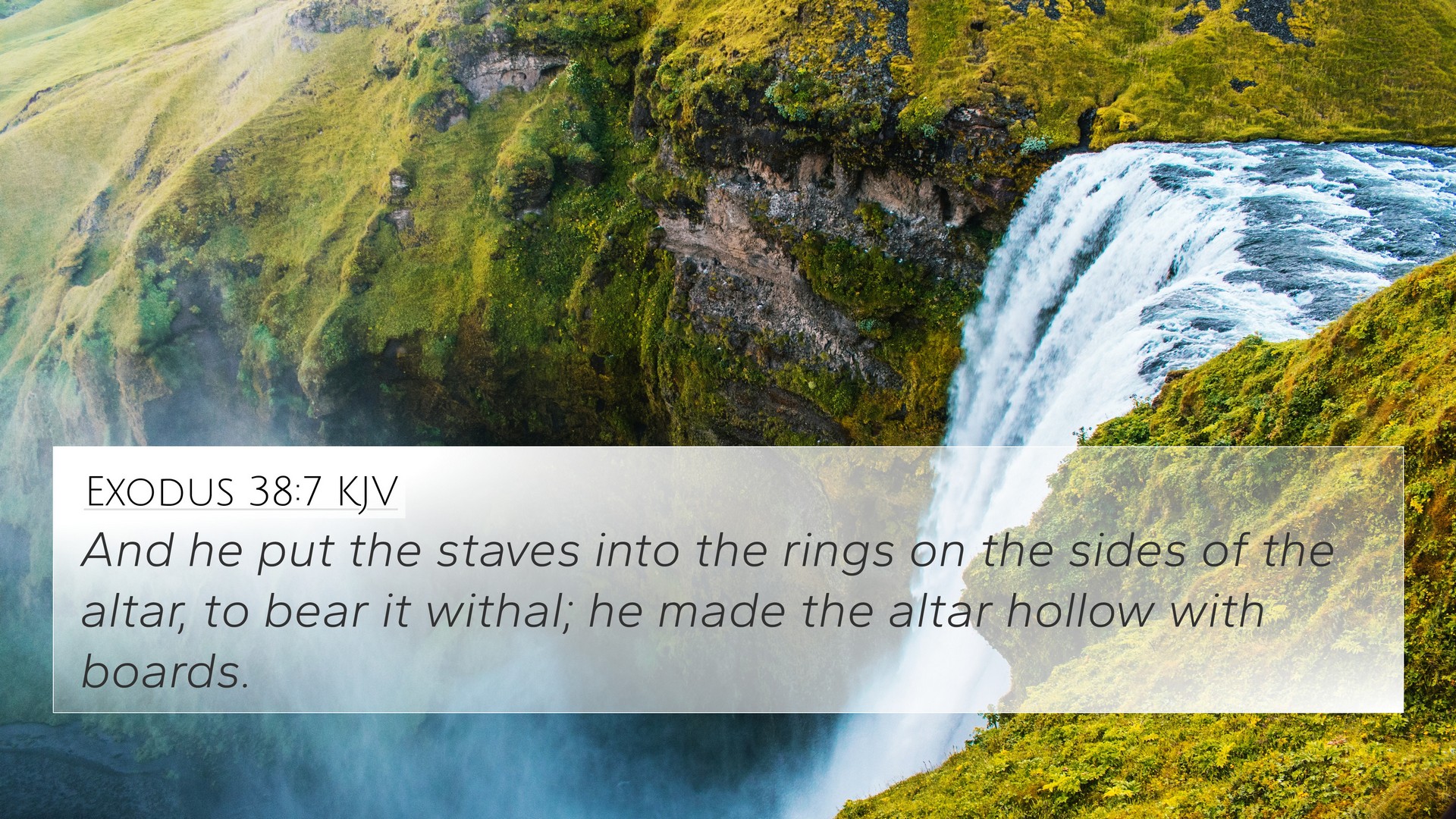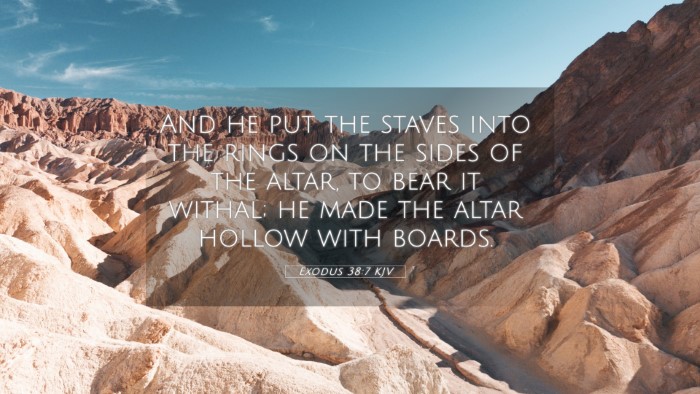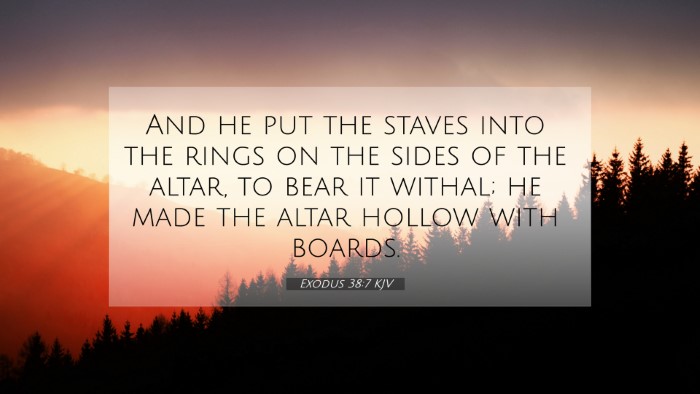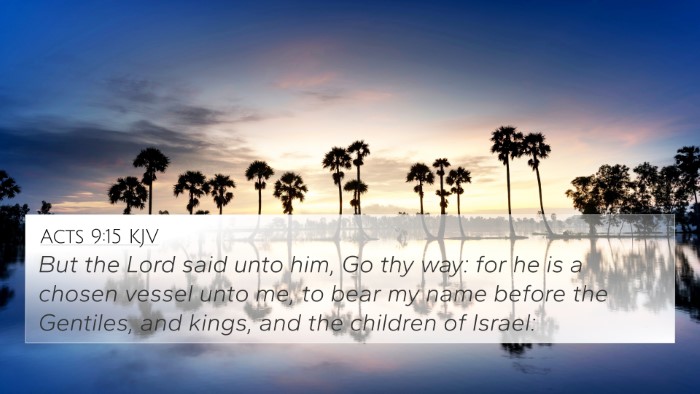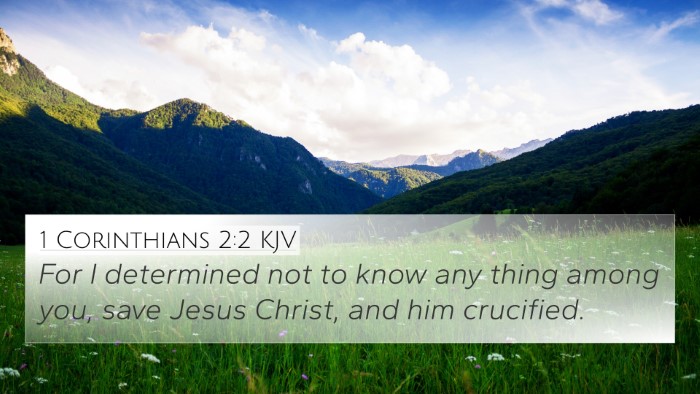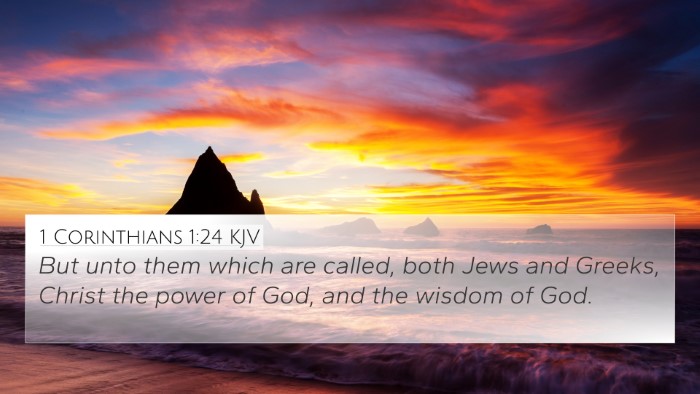Understanding Exodus 38:7: Biblical Insights
Exodus 38:7 states: "And he put the staves into the rings by the sides of the altar, to bear it withal; he made the altar hollow with boards." This verse describes a significant detail regarding the construction of the altar for burnt offering in the Tabernacle.
This verse carries implications not just for its immediate context but also for broader theological understanding. By exploring insights from public domain commentaries such as those by Matthew Henry, Albert Barnes, and Adam Clarke, we can glean deeper meanings that enrich our understanding of both the scripture itself and its connections within the broader biblical narrative.
Key Themes in Exodus 38:7
- Construction and Functionality: The construction of the altar with mobility in mind symbolizes the dynamic nature of worship and sacrifice.
- Divine Instructions: The details surrounding the altar's construction reflect obedience to God's directives, emphasizing the importance of following divine guidance in worship.
- Symbolism of Sacrifice: The altar's portrayal emphasizes the necessity of atonement within the worship framework of the Israelites.
Insights from Commentaries
Matthew Henry's Commentary
Matthew Henry highlights the importance of the altar’s construction in reflecting on God's covenant with Israel. He notes that the specific instructions for the altar both instructed worship practices and represented God's holiness. The mention of the "hollow" design symbolizes not just physical emptiness but the deeper need for humility and the recognition of sin in the process of offering sacrifices.
Albert Barnes' Notes
Albert Barnes emphasizes the functionality of the altar, drawing attention to its mobility. The "staves" (or poles) allowed for easy transport of the altar, reflecting the transient nature of Israel's journey in the wilderness. This practical aspect serves as a metaphor for the journey of believers, who must remain prepared to follow God's lead wherever He directs them.
Adam Clarke's Commentary
Adam Clarke expands upon the significance of the altar’s construction, insisting that it embodies the spiritual truths that underpin the Israelite faith. He explains that the use of boards to create a hollow altar illustrates the need for genuine sacrifice rather than superficial offerings. Clarke emphasizes that the altar's hollow nature signifies a heart that must be filled with devotion to God rather than with worldly distractions.
Cross-References and Related Scriptures
Exodus 38:7 is intricately connected to several other biblical texts that shed further light on the themes presented. Here are some key cross-references:
- Exodus 27:1-8: Provides further details on the construction of the altar, emphasizing dimensions and materials used.
- Leviticus 1:1-17: Details instructions for offerings on the altar, highlighting the significance of sacrifices in worship.
- Hebrews 9:13-14: The connection of sacrificial practices from the Old Testament to the ultimate sacrifice of Christ.
- Acts 7:44: A reference to the Tabernacle, discussing its function among the Israelites as they traveled.
- 1 Peter 2:5: Illustrates believers as living stones, highlighting sanctity and sacrificial service in a spiritual sense.
- Romans 12:1: The call to present our bodies as living sacrifices, echoing the thematic ties to the altar.
- John 4:24: The emphasis on worshiping "in spirit and truth," linking the Old Testament practices to the New Covenant.
Thematic Connections
The connections between Exodus 38:7 and the wider narrative of scripture include important themes such as sacrifice, obedience, and the presence of God. By employing a cross-referencing Bible study approach, individuals can better understand how these themes are interwoven throughout scriptures.
Exploring Connections Through Cross-Referencing
To thoroughly engage with these scriptures, here are some tools and methods for effective cross-referencing:
- Bible Concordance: A useful resource for finding related verses based on keywords.
- Bible Cross-Reference Guide: Allows systematic exploration of thematic parallels.
- Bible Chain References: A method to connect related verses across different books.
- Comparative Bible Study: An approach for deeper analysis of comparative themes across scripture.
Fostering Understanding with Cross-References
Utilizing the provided cross-references, believers and seekers alike can enhance their understanding of issues surrounding sacrifice and worship throughout the Bible. This adds depth to personal study and group discussions, fostering a richer appreciation of scripture.
Conclusion
Understanding Exodus 38:7 through the insights of various public domain commentaries allows for a comprehensive interpretation that resonates with significant biblical themes. The interconnected nature of scripture underscores the importance of examining the Bible both holistically and thematically, creating pathways for deeper spiritual growth and transformative understanding.
